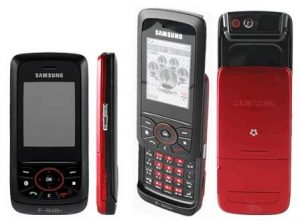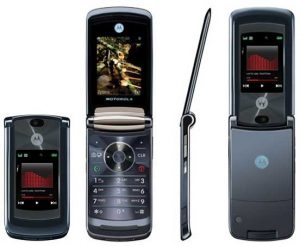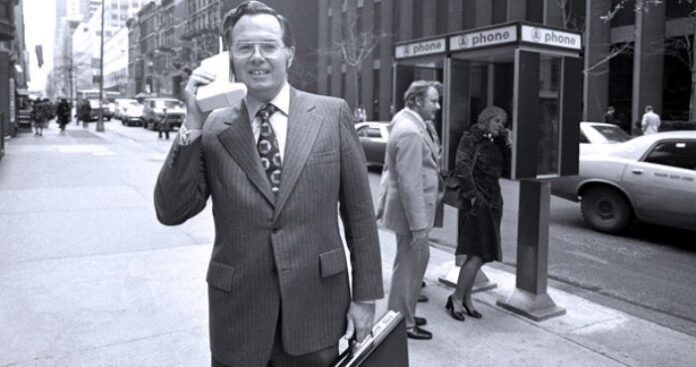Editor’s Note: RCR Wireless News goes all in for “Throwback Thursdays,” tapping into our archives to resuscitate the top headlines from the past. Fire up the time machine, put on the sepia-tinted shades, set the date for #TBT and enjoy the memories!
Sprint struggles (aka, what was old is new again)
Sprint Nextel Corp. continued to show signs of turning around its customer growth challenges, saying it added 400,000 subscribers during the second quarter. While the results pale in comparison to its larger competitors AT&T Mobility and Verizon Wireless, both of which added in excess of 1 million customers during the quarter, as well as the 708,000 customers the carrier added during the second quarter of 2006, the growth was seen as a bright spot for the industry’s No. 3 carrier. Like recent quarters, Sprint Nextel’s customer growth was on the back of its Boost Mobile prepaid service and wholesale channels that include its mobile virtual network operator partners. The carrier said it added 169,000 Boost customers during the quarter, including around 100,000 subscribers to Boost’s new Unlimited calling plan. The growth was less than half the 498,000 Boost customers the carrier added during the second quarter of 2006. Boost ended the quarter with 4.5 million total customers. Sprint Nextel’s wholesale channels contributed 155,000 subscribers during the second quarter and ended the period with 7 million total wholesale customers on its network. However, direct postpaid growth continued to stumble as the carrier said its 16,000 direct postpaid subscriber growth reflected a gain on its CDMA side offset by losses of iDEN customers … Read more
But hey, there’s always WiMAX to look forward to
The nation’s first, and so far only, carrier to announce plans for a nationwide mobile WiMAX network now faces the successful completion of tens of thousands of construction projects before it reaches reality. Just a few weeks after announcing plans to collaborate on the development and operation of the network, Sprint Nextel Corp. and Clearwire Corp. mapped out the regions each company will focus on in the arrangement. Clearwire’s region, while significantly larger in size, will cover approximately 70 million fewer people than Sprint Nextel’s region, which is expected to cover around 185 million people. Clearwire’s WiMAX footprint eventually should cover about 115 million people in central and northern California, the Pacific Northwest, the Rocky Mountain region, portions of the Midwest and most of the South, Alaska, Hawaii and swaths of New York, Pennsylvania and Texas. Sprint Nextel will build out its mobile WiMAX network coverage throughout the rest of the country. “Sprint has a multi-vendor strategy in building this network, and has employed that approach with its current networks. We maintain flexibility in what we award and we will make those decisions in a manner to maximize the benefit to Sprint,” noted Doug Smith, VP of network engineering at Sprint Nextel … Read more
Samsung’s “Blast” from the past
Device vendors seem to be getting the hang of names, though it’s hard to let go of those pesky numeric

tags. Enter the Blast from Samsung Electronics Co. Ltd., aka the SGH-t729. Everyone loves to have a “blast,” right? The phone is being marketed as a messaging-centric handset-it’s a slider with two letters per pivoting key and Tegic’s T9 predictive text-for T-Mobile USA Inc.’s slightly younger, presumably message-happy and price-conscious consumer segment. The carrier and vendor call the device “QWERTY-like” because the letters are laid out in horizontal QWERTY fashion, with two letters per key, while the vertical 12-key numeric pad is called out by red highlights … Read more
Oh, give me a home, where there’s reasonable roaming …
Wireless carriers must allow wireless customers of competing operators using similar technology to automatically roam on their networks when outside of their home coverage area, the Federal Communications Commission ruled yesterday. FCC members unanimously voted in favor of new rules that require carriers to offer “reasonable and non-discriminatory” roaming services to other carriers’ customers upon request. However, bowing to the long-held creed of letting the marketplace determine all, the ruling fell short of imposing a cap … Read more
Recapping Google’s roadmap in mobile
In case you hadn’t heard, Google is going mobile. The Wall Street Journal last week trumpeted the Internet giant’s efforts to build handsets in a page-one story that quickly echoed throughout the blogosphere and the trade press. London’s Telegraph stoked the rumor mill a few days later, reporting that Google services including search, e-mail and maps would be embedded on Google-branded phones.Google, for its part, only increased the buzz by remaining coyly mum. But is any of this news to anyone? Google first dipped its toe in the mobile waters in 2000 with a search service for Web-enabled phones, and the company has moved aggressively into the space ever since. And while much of the developer’ s work has been done behind closed doors, a quick glance at the firm’s Web site showcases its wireless offerings, from the venerable SMS search to an application that allows mobile users to share video clips on YouTube. Just as importantly, Google has struck key deals in mobile even as it makes strides on its own. Vodafone Group plc has integrated a Google-branded search box with its Vodafone live! service, T-Mobile tapped Google for its “web ‘n’ walk” mobile Internet offering, and Motorola Inc. struck a deal to install a Google-branded hard key on phones … Read more
Look out, here comes the Razr2
Motorola Inc. is rolling the dice on a new version of its blockbuster Razr handset and its near-term fortunes may

depend on achieving solid sales of the device. Sprint Nextel Corp., Verizon Wireless and AT&T Inc. announced today plans to launch the Razr2, also known as the MotoRazr2 V9m, in the coming weeks. Sprint Nextel seems to have the jump on its larger competitor with plans to have the device available through its Web site and telesales on Aug. 22 at $250 with a two-year contract and in its retail locations by Sept. 4, while Verizon Wireless said it will launch the device in September at $300 after rebates. The CDMA2000 1x EV-DO device includes a 2-megapixel camera, 2 gigabytes of onboard memory and a range of messaging options. The handset also offers Motorola’s CrystalTalk technology. Both carriers will also include access to their respective online music and content services … Read more
Check out the RCR Wireless News’ Archives for more stories from the past.

